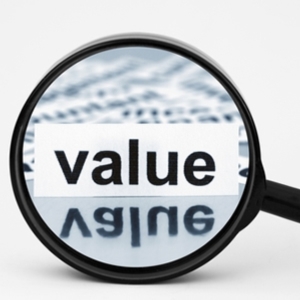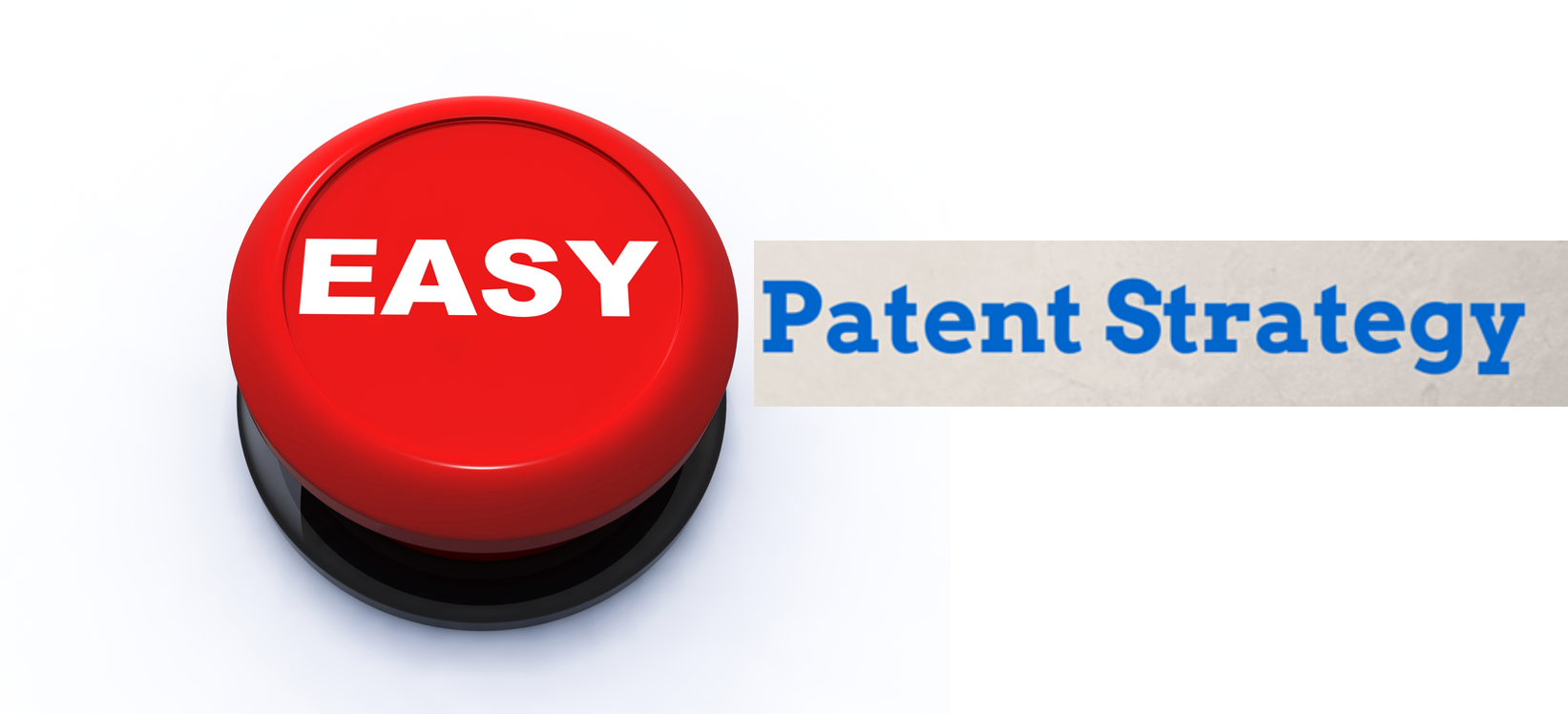 Introduction
As someone who works with a wide variety of startups and small companies as the in-house expert interfacing between outside patent lawyers, I have found it helpful to compare and contrast the various legal practice styles encountered, at least because I strive to continuously improve the IP strategy consulting services that I provide my clients. Recently, I have noted that there often appears to be a profound lack of alignment between the desired outcomes that my clients seek from their patent efforts and the business models of many of the lawyers we encounter. These lawyers seek to engage clients like mine, but often they are not able to provide the value we are seeking. Since I have been thinking a lot about this topic lately, I decided to write about my experiences because others may appreciate the context that I can bring
Introduction
As someone who works with a wide variety of startups and small companies as the in-house expert interfacing between outside patent lawyers, I have found it helpful to compare and contrast the various legal practice styles encountered, at least because I strive to continuously improve the IP strategy consulting services that I provide my clients. Recently, I have noted that there often appears to be a profound lack of alignment between the desired outcomes that my clients seek from their patent efforts and the business models of many of the lawyers we encounter. These lawyers seek to engage clients like mine, but often they are not able to provide the value we are seeking. Since I have been thinking a lot about this topic lately, I decided to write about my experiences because others may appreciate the context that I can bring
Patent Lawyer Practice Models that Work and Don’t Work for Startups and Small Companies
Startup Patent Strategy: Be Unbreakable
 Several of my current clients are startup companies that understand that, to have real value, their patents must be seen by a third party as meaningful to the opportunity--be it customers, revenue stream, or any other business strategy--that this potential potential partner, licensor, or acquirer seeks to access. Put another way, patents generated by early stage companies that are developing innovative technology must “make it cheaper to go through them than around them.” For these types of patent owners, due diligence conducted by third parties is more than just “kicking the tires” of the patent portfolio; instead, their patents will be examined by an expert team to make sure they won’t "break" just when they’re needed most.
As an initial aspect of this discussion, it should be stressed that not all patents are equal in value. Some patents--and, in my view, this is the
Several of my current clients are startup companies that understand that, to have real value, their patents must be seen by a third party as meaningful to the opportunity--be it customers, revenue stream, or any other business strategy--that this potential potential partner, licensor, or acquirer seeks to access. Put another way, patents generated by early stage companies that are developing innovative technology must “make it cheaper to go through them than around them.” For these types of patent owners, due diligence conducted by third parties is more than just “kicking the tires” of the patent portfolio; instead, their patents will be examined by an expert team to make sure they won’t "break" just when they’re needed most.
As an initial aspect of this discussion, it should be stressed that not all patents are equal in value. Some patents--and, in my view, this is the
Patentability Reviews for Innovations
 Patent professionals can do a better job providing patentability review, or "opinion," services for innovators. As most readers would recognize, a patentability review assesses whether the invention to be claimed will meet the legal requirements for patentability. In the US, this entails an assessment by a patent attorney, which can be based on a formal or informal search, whether the client’s invention is novel and non-obvious over the prior art. The rules by which a patent attorney makes a determination of patentability are well-established and would not be considered controversial by most experienced practitioners. Nonetheless, as an IP Strategist who works exclusively with clients engaged in developing and delivering meaningful innovations to consumers, I know that these entrenched patentability assessment practices deserve retooling for those clients who can be classified as "innovators." To this end, I believe that the way the patent
Patent professionals can do a better job providing patentability review, or "opinion," services for innovators. As most readers would recognize, a patentability review assesses whether the invention to be claimed will meet the legal requirements for patentability. In the US, this entails an assessment by a patent attorney, which can be based on a formal or informal search, whether the client’s invention is novel and non-obvious over the prior art. The rules by which a patent attorney makes a determination of patentability are well-established and would not be considered controversial by most experienced practitioners. Nonetheless, as an IP Strategist who works exclusively with clients engaged in developing and delivering meaningful innovations to consumers, I know that these entrenched patentability assessment practices deserve retooling for those clients who can be classified as "innovators." To this end, I believe that the way the patent
Startup Patent Licensing: Beating the Long Odds
 Achieving meaningful revenue through licensing by startup entrepreneurs can be for all intents and purposes a “unicorn event:” much discussed, but rarely achieved. Notwithstanding this reality, a significant number of startup entrepreneurs who seek to engage me for IP Strategy and patent development consulting assert confidently that their necessity for a patent is based on a business strategy of licensing (or selling) their protected product or technology to an established company.
This is not surprising because it is embedded in the DNA of much of society that “if you build a better mousetrap, the world will beat a path to your door.” Late night infomercials featuring famous people and entrepreneur “hero stories” in the press also bolster this conviction. It is certainly heartwarming and inspiring to believe that an "Average Josephine" can become rich solely on
Achieving meaningful revenue through licensing by startup entrepreneurs can be for all intents and purposes a “unicorn event:” much discussed, but rarely achieved. Notwithstanding this reality, a significant number of startup entrepreneurs who seek to engage me for IP Strategy and patent development consulting assert confidently that their necessity for a patent is based on a business strategy of licensing (or selling) their protected product or technology to an established company.
This is not surprising because it is embedded in the DNA of much of society that “if you build a better mousetrap, the world will beat a path to your door.” Late night infomercials featuring famous people and entrepreneur “hero stories” in the press also bolster this conviction. It is certainly heartwarming and inspiring to believe that an "Average Josephine" can become rich solely on
Startup Patent Strategy: US Patent Non-Publication

UPDATE: Lack of Patent Strategic Focus Results in $100’s Millions in Lost Value
 Last week, an en banc Federal Circuit (that is, the majority of the sitting judges, not just the usual three judge panel), rendered a decision that saved the patent that keeps the ANGIOMAX(R) product from generic competition. In short, the Federal Circuit saved this successful blood thinner medicine from generic competition and, in so doing, saved the proverbial "bacon" of The Medicines Company. Since I wrote about this case about a year ago when the ANGIOMAX patent was invalidated by a three judge Federal Circuit panel for violating the US "on sale bar," I thought it prudent to update the post with this new information.
The purpose of this post is not to summarize the new "on sale bar" rule. Many law firms and commentators have already done so. A good summary can be found here. In short, the law
Last week, an en banc Federal Circuit (that is, the majority of the sitting judges, not just the usual three judge panel), rendered a decision that saved the patent that keeps the ANGIOMAX(R) product from generic competition. In short, the Federal Circuit saved this successful blood thinner medicine from generic competition and, in so doing, saved the proverbial "bacon" of The Medicines Company. Since I wrote about this case about a year ago when the ANGIOMAX patent was invalidated by a three judge Federal Circuit panel for violating the US "on sale bar," I thought it prudent to update the post with this new information.
The purpose of this post is not to summarize the new "on sale bar" rule. Many law firms and commentators have already done so. A good summary can be found here. In short, the law
IP Strategy is Increasing Focus at Innovative Companies: Here’s Why
 After more than 8 years, I can report that IP Strategy is an increasing focus at innovative companies, and there is a solid reason why this is so. By way of background, for many years, I have been part of a small minority of IP experts who advocate that companies desiring to maximize the value of their IP investments re-think the way they seek and obtain patents. In short, I and my IP Strategist peers urge companies to wrest control of their “IP destiny” from their legal service providers who have traditionally been seen as the primary drivers of the patenting process for their clients. Of course, readers of my regular ruminations know that my strongly held view is that “the
After more than 8 years, I can report that IP Strategy is an increasing focus at innovative companies, and there is a solid reason why this is so. By way of background, for many years, I have been part of a small minority of IP experts who advocate that companies desiring to maximize the value of their IP investments re-think the way they seek and obtain patents. In short, I and my IP Strategist peers urge companies to wrest control of their “IP destiny” from their legal service providers who have traditionally been seen as the primary drivers of the patenting process for their clients. Of course, readers of my regular ruminations know that my strongly held view is that “the
Product Companies Must Modify Patent Strategy When Adopting Innovation as Business Model
 I recently finished an IP Strategy engagement with major consumer products corporation, where I interfaced with the head of New Product Development and Innovation Strategy. This company is embarking on a major shift in the way it brings products to market. In short, the company is transitioning from one that introduces new products with incremental improvements into the market on a regular basis, to one that focuses more on innovation. For this client, this strategy will mean that a significant portion of its product development efforts will be focused on solving unmet and identifying emerging customer needs, with the ultimate goal of introducing truly innovative consumer products that will be successful in the marketplace.
I am sure that my client's new products will be found to be highly desirable to their consumers: the
I recently finished an IP Strategy engagement with major consumer products corporation, where I interfaced with the head of New Product Development and Innovation Strategy. This company is embarking on a major shift in the way it brings products to market. In short, the company is transitioning from one that introduces new products with incremental improvements into the market on a regular basis, to one that focuses more on innovation. For this client, this strategy will mean that a significant portion of its product development efforts will be focused on solving unmet and identifying emerging customer needs, with the ultimate goal of introducing truly innovative consumer products that will be successful in the marketplace.
I am sure that my client's new products will be found to be highly desirable to their consumers: the
10 Key IP Strategy Insights for Innovative Companies for 2016 and Beyond
 As 2016 begins, I am entering my 8th year(!) of writing about IP strategy insights from a business value creation perspective, both here on my IPMaximizerBlog.com and, more recently, on LinkedIn. While there were quite a few IP lawyers writing blogs in 2008, no one else was then writing about IP strategy. Today, there are even more IP lawyers writing blogs about IP law, but still almost none writing that address IP strategy topics that are meaningful outside of the IP monetization and large IP portfolio context. Over the years, it has sometimes seemed like I was the proverbial "lone voice in the wilderness" who speaks frankly (or as one of my regular readers said to me last year "bravely") about how innovators can take charge of their IP strategy to create value and reduce
As 2016 begins, I am entering my 8th year(!) of writing about IP strategy insights from a business value creation perspective, both here on my IPMaximizerBlog.com and, more recently, on LinkedIn. While there were quite a few IP lawyers writing blogs in 2008, no one else was then writing about IP strategy. Today, there are even more IP lawyers writing blogs about IP law, but still almost none writing that address IP strategy topics that are meaningful outside of the IP monetization and large IP portfolio context. Over the years, it has sometimes seemed like I was the proverbial "lone voice in the wilderness" who speaks frankly (or as one of my regular readers said to me last year "bravely") about how innovators can take charge of their IP strategy to create value and reduce
Why Business Fails to Generate Patenting Strategies that Protect Innovation Value & How to Make It Easier
 Business leaders often find the decision of whether to obtain patent protection for their company's innovations to be difficult. Of course, conventional wisdom, not to mention legions of patent attorneys, assert that patents are "important" to "protect" one's business. In my experience, however, few business people can clearly articulate specifically why and to what extent patents can and will create real financial value for their business. This means that, in many companies, the decision to obtain (or not obtain) patent protection in a particular situation comes down to evaluation of anecdotal information from which a "business judgment" is formulated. In my view, when based only on anecdotes, as opposed to real data, such "business judgment" effectively amounts to nothing more than a "belief system" in which patents are viewed as relevant or irrelevant to the business over time.
As an example
Business leaders often find the decision of whether to obtain patent protection for their company's innovations to be difficult. Of course, conventional wisdom, not to mention legions of patent attorneys, assert that patents are "important" to "protect" one's business. In my experience, however, few business people can clearly articulate specifically why and to what extent patents can and will create real financial value for their business. This means that, in many companies, the decision to obtain (or not obtain) patent protection in a particular situation comes down to evaluation of anecdotal information from which a "business judgment" is formulated. In my view, when based only on anecdotes, as opposed to real data, such "business judgment" effectively amounts to nothing more than a "belief system" in which patents are viewed as relevant or irrelevant to the business over time.
As an example


